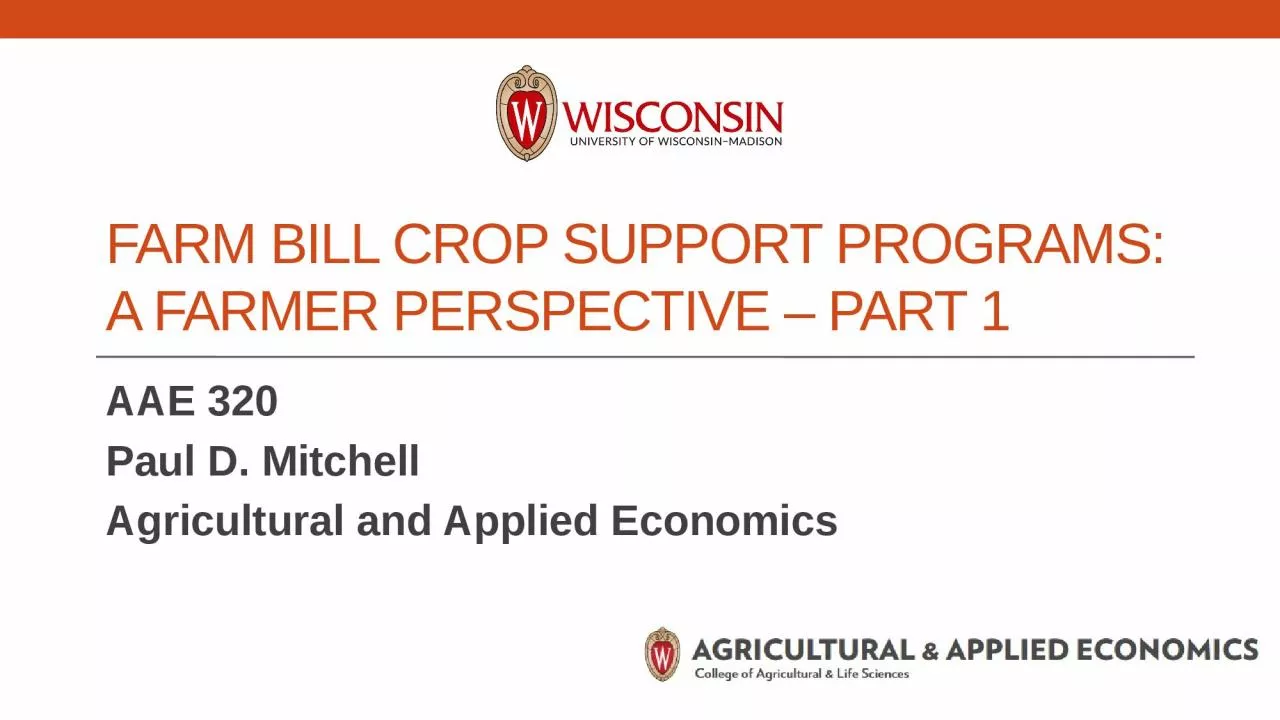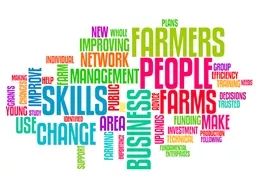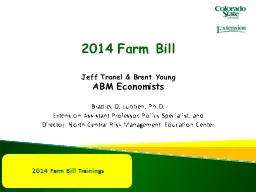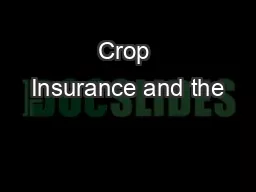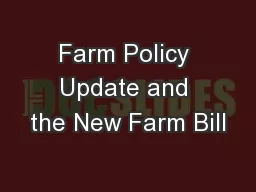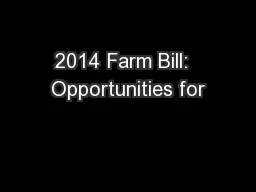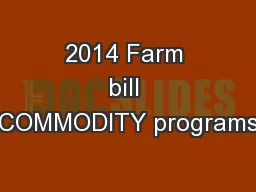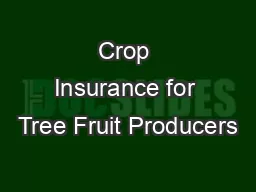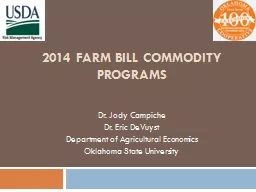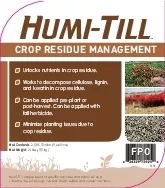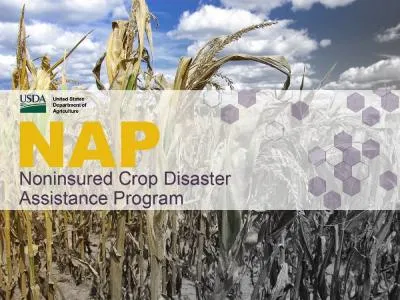PPT-Farm Bill Crop Support Programs:
Author : roy | Published Date : 2023-10-31
A Farmer Perspective Part 1 AAE 320 Paul D Mitchell Agricultural and Applied Economics Learning Goals To understand how these three commodity support programs
Presentation Embed Code
Download Presentation
Download Presentation The PPT/PDF document "Farm Bill Crop Support Programs:" is the property of its rightful owner. Permission is granted to download and print the materials on this website for personal, non-commercial use only, and to display it on your personal computer provided you do not modify the materials and that you retain all copyright notices contained in the materials. By downloading content from our website, you accept the terms of this agreement.
Farm Bill Crop Support Programs:: Transcript
Download Rules Of Document
"Farm Bill Crop Support Programs:"The content belongs to its owner. You may download and print it for personal use, without modification, and keep all copyright notices. By downloading, you agree to these terms.
Related Documents

